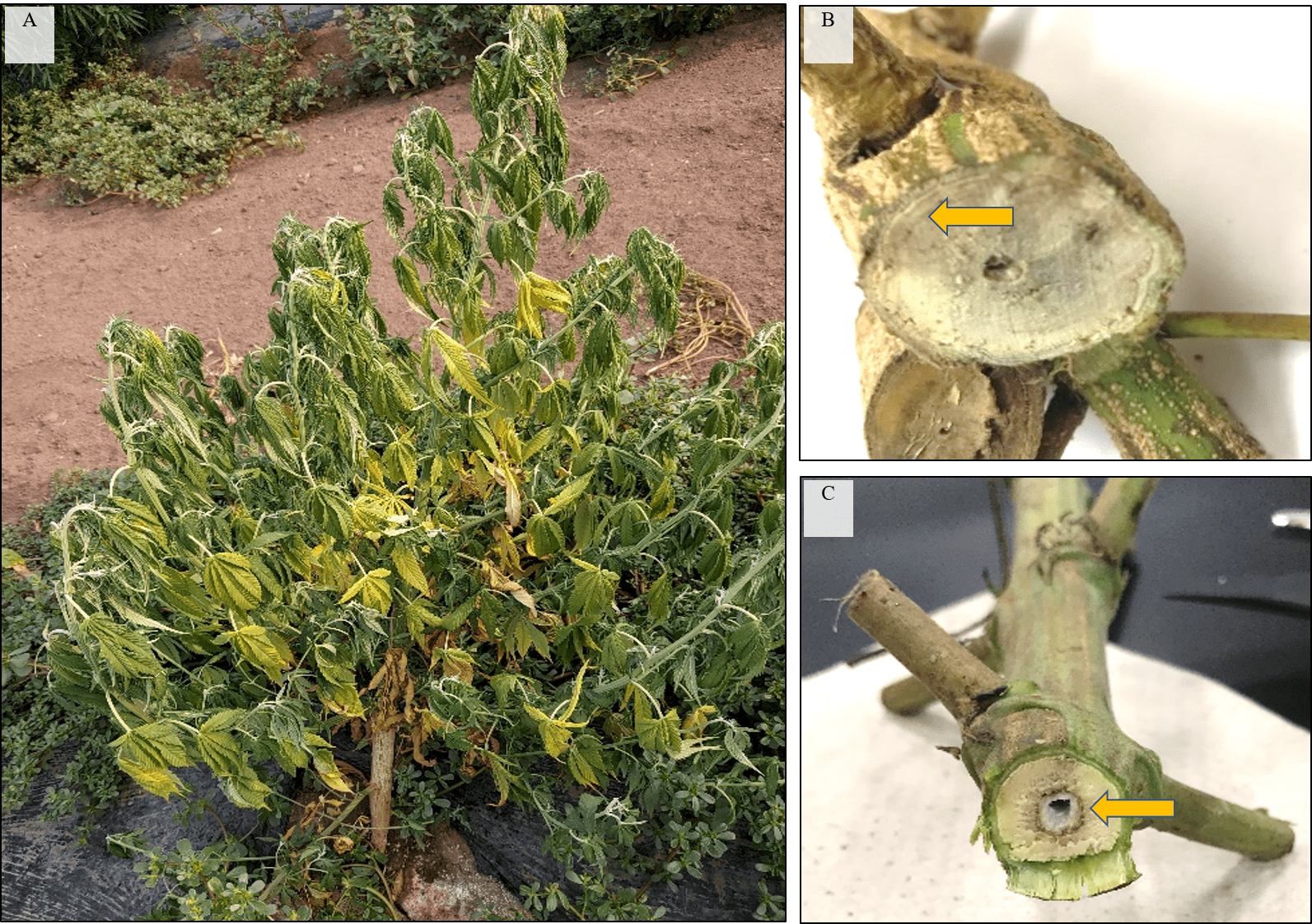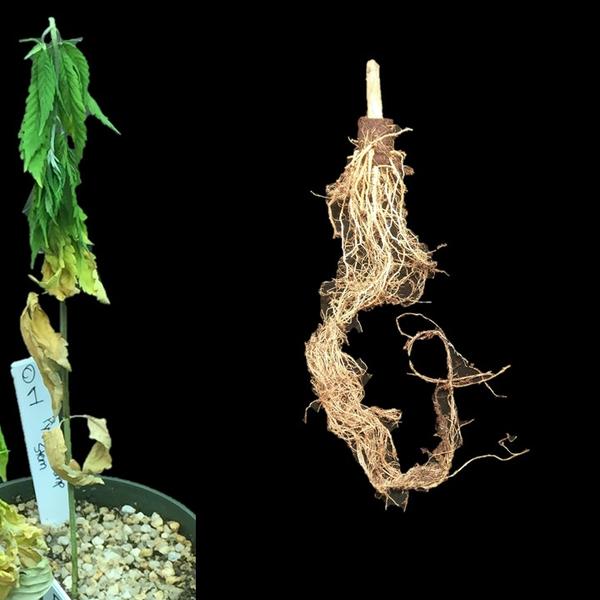@peace
Well-known member
I have had the same issue with a plant this year that I just chopped down and a few last year. I haven't been able to positively ID it yet, if it is fungal it could be pythium (water mold), white mold (sclerotinia), verticillium, or fusarium.
Where I have this issue used to be the edge of one of our fields before I turned it into a garden. It is a microclimate that is sheltered by trees and the temperature is buffered by open water, it is sand loam over sand over clay, drains well and holds moisture at the same time. We always had really bad white mold infections in soybeans there when it was part of the field so I lean towards that in my case.
We can also get pythium in soybeans in the north part of that field where we have heavy clay in wet years. I use soybeans as an example I am also familiar with but these diseases have many hosts, including cannabis. Cannabis will also be the same as soybeans where certain varieties are more susceptible to a given disease than others. Here is some literature for some of the fungal diseases to help ID:

 extension.oregonstate.edu
extension.oregonstate.edu

Where I have this issue used to be the edge of one of our fields before I turned it into a garden. It is a microclimate that is sheltered by trees and the temperature is buffered by open water, it is sand loam over sand over clay, drains well and holds moisture at the same time. We always had really bad white mold infections in soybeans there when it was part of the field so I lean towards that in my case.
We can also get pythium in soybeans in the north part of that field where we have heavy clay in wet years. I use soybeans as an example I am also familiar with but these diseases have many hosts, including cannabis. Cannabis will also be the same as soybeans where certain varieties are more susceptible to a given disease than others. Here is some literature for some of the fungal diseases to help ID:

Wilt diseases in hemp and their management in the Pacific Northwest
Hemp is susceptible to fungal pathogens that induce wilt disease that can kill plants. The fungi that cause the disease can survive for years and are easily spread. But there are steps growers can take to prevent it.

Pythium Root and Crown Rot of Industrial Hemp | NC State Extension Publications
This factsheet discusses pythium root and crown rot in industrial hemp production.
content.ces.ncsu.edu


